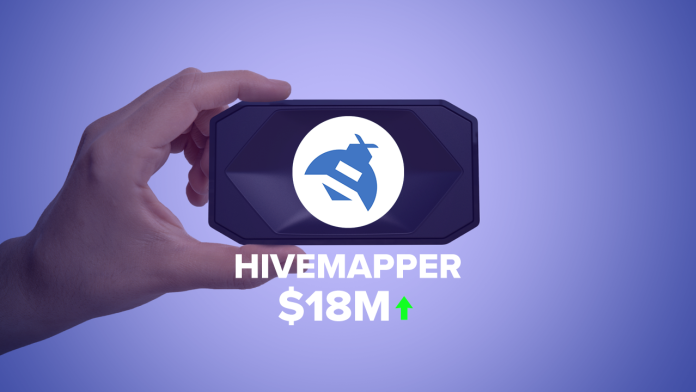tl;dr Summary: Hivemapper promises to be a decentralized version of Google Maps, providing censorship-free, open-source mobile mapping hardware and software for network contributors. They just raised $18M in a seed funding round and will roll out the beta version this summer.
It’s hard to imagine how we used to get around before Google Maps. Their mobile app has been ingrained into our daily routines whether we’re checking traffic before heading to work or searching for the top rated restaurants nearby. Google Maps is by all intents and purposes the king of the hill when it comes to web mapping platforms and consumer applications. However, one Web3 startup called Hivemapper has raised $18M in a seed funding round to create a decentralized competitor to the mapping software juggernaut.
According to CEO Ariel Seidman, the funds will be used to support the mainnet launch of Hivemapper’s native HONEY token and to get more map contributors. Seidman started Hivemapper as a non-crypto company in 2015, but was inspired by the success and rapid growth of Helium, a crypto-incentivized network of wireless hotspots, which also began as a non-crypto company in 2013.
The multi-disciplinary team at Hivemapper have spent years building and scaling global maps and geospatial products at Yahoo Maps, Scale AI, and Mapbox. They have raised funds to begin rolling out a decentralized mapping network. The term “decentralized” in blockchain has a variety of meanings, but it generally refers to the transfer of control and decision-making from a centralized entity to a distributed network. In Hivemapper’s case, the global map will be owned by the very people who build it using dash cams equipped with their open source software. Drivers who help build out the Hivemapper network will be rewarded in a cryptocurrency called $HONEY.

Today, maps are controlled by only a handful of companies because they are expensive to build and maintain. The mobile map market is one of the most centralized industries in the Technology sector with Google Maps controlling 80% of the market. This has been the cause of many of the problems with mobile maps.
The lack of competition in the industry gives Google Maps the freedom to raise their API prices to detrimental effect in some areas of the world. The Google Maps API helps web developers take the power of Google Maps and put it directly on their own site. Businesses both big and small rely on it to add relevant and customizable content to their websites, blogs and mobile applications. The sharp rise in prices in recent years have many small companies looking for alternatives because they cannot afford to absorb the rising costs.
Another issue is that centralized mapping networks are often not as up-to-date as they should be. Google is constantly updating metro areas because of the turnover of buildings, restaurants, companies, and more. However, if you live in a rural area, there’s often no need to update Street View until several years have passed because the process to update street views involves a full vehicle equipped with thousands of dollars worth of camera equipment driving down roads. In some cases, maps can even be prone to censorship to satisfy politicians or land owners.
In order to improve their maps, Google often uses their customers’ private and sensitive location data without compensating them for it. Hivemapper plans on addressing all of these concerns by building a network of maps owned, maintained and optimized by their users.
Incentivizing contributions to the Hivemapper network’s quality and freshness solves the problems with centralized maps. It is relatively inexpensive for contributors to purchase a 4K dashcam, mount them on their vehicle and mine cryptocurrency while driving their daily route as they normally would. By doing this on a global scale with millions of users around the world, Hivemapper could quickly and affordably generate a world map that is always fresh and censorship-resistant.
Hivemapper’s APIs will enable developers to cost effectively integrate maps and geolocation services into their applications for driving directions, traffic, geo search and much more. The revenue from these services will be redistributed to the Hivemapper Network contributors.
There will be multiple ways to contribute to the network and earn rewards. Other than drivers, Hivemapper will also require people to validate the 4K street-level imagery collected by drivers, annotate the map with details, and software developers to work on core mapping features.
Hivemapper will begin rolling out a beta version of their software this summer. They’ll start selling their crypto-enabled 4k dash cams to an early group of contributors. The Hivemapper software is open source, so other dash cam manufacturers will be free to equip the software on their dash cams as well with approval from the Hivemapper foundation. Hivemapper expects to expand to other major cities in the second half of the year and then fully deploy their network globally on the Solana mainnet by the end of the year.
The Hivemapper team expects there to be several possibilities to expand their features in the future. Some technologies that can be used to create additional layers to Hivemapper’s software are 360 degree cameras, air-quality sensors, low-cost radar and LiDar sensors for object mapping and 3D maps, and the use of drones to provide high precision aerial perspectives.






